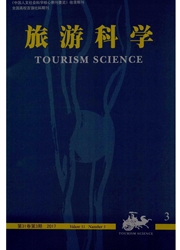

 中文摘要:
中文摘要:
标识牌是目前被运用最为广泛的解说媒介之一,但我国现阶段对自然保护区标识牌的研究偏重于规划设计方法与内容,对其解说效果的研究明显不足。本文基于以上背景,选择具有代表性的北京松山国家级自然保护区为研究区,从游客视角出发对标识牌解说效果进行研究。运用因子分析法,构建了研究区标识牌评估指标体系,包括标识牌外型、解说技巧和解说内容等三个方面共21项因子。并采用多层次模糊评价法,定量评价了研究区标识牌的解说效果。评估结果表明,研究区标识牌外型因子和解说内容因子解说效果中等,解说技巧因子解说效果较差。
 英文摘要:
英文摘要:
The interpretive planet is one of the most widely used kind of interpretive media. Domestic researches related have paid more attentions on designing and planning than on the interpretive effects since its introduction and appliance in the scenic spots, which ignores the demands of the subjects to a large extent. This paper took Songshan National Nature Reserve as a case in point to explain the effects of interpretive planets from visitors' perspectives. It built an assessment index system including a total of 21 factors from the three aspects namely appearance, skills and content and applied the multi-level fuzzy evaluation method to assess the effects of planets based on a questionnaire. The results show that respondents had the highest satisfaction degree with appearance followed by content while skills factor the lowest.
 同期刊论文项目
同期刊论文项目
 同项目期刊论文
同项目期刊论文
 期刊信息
期刊信息
